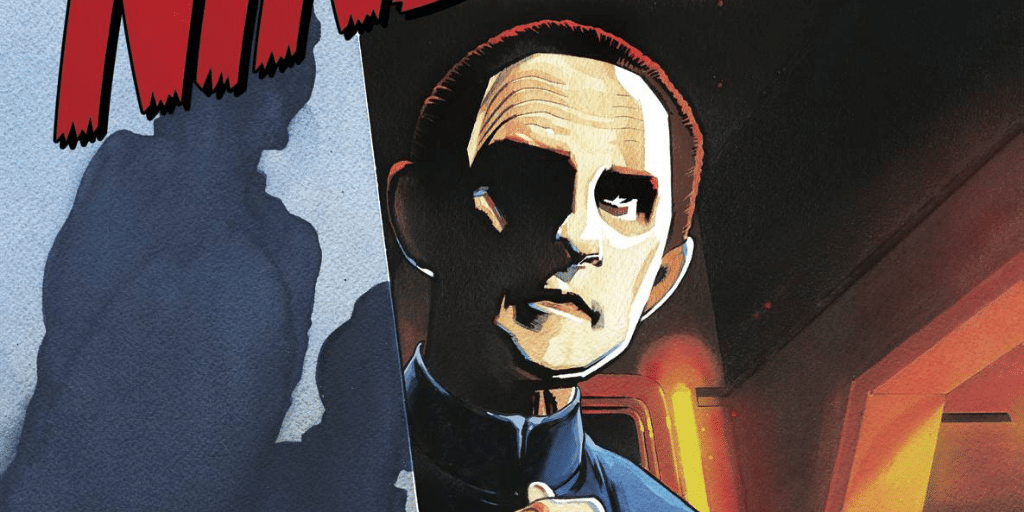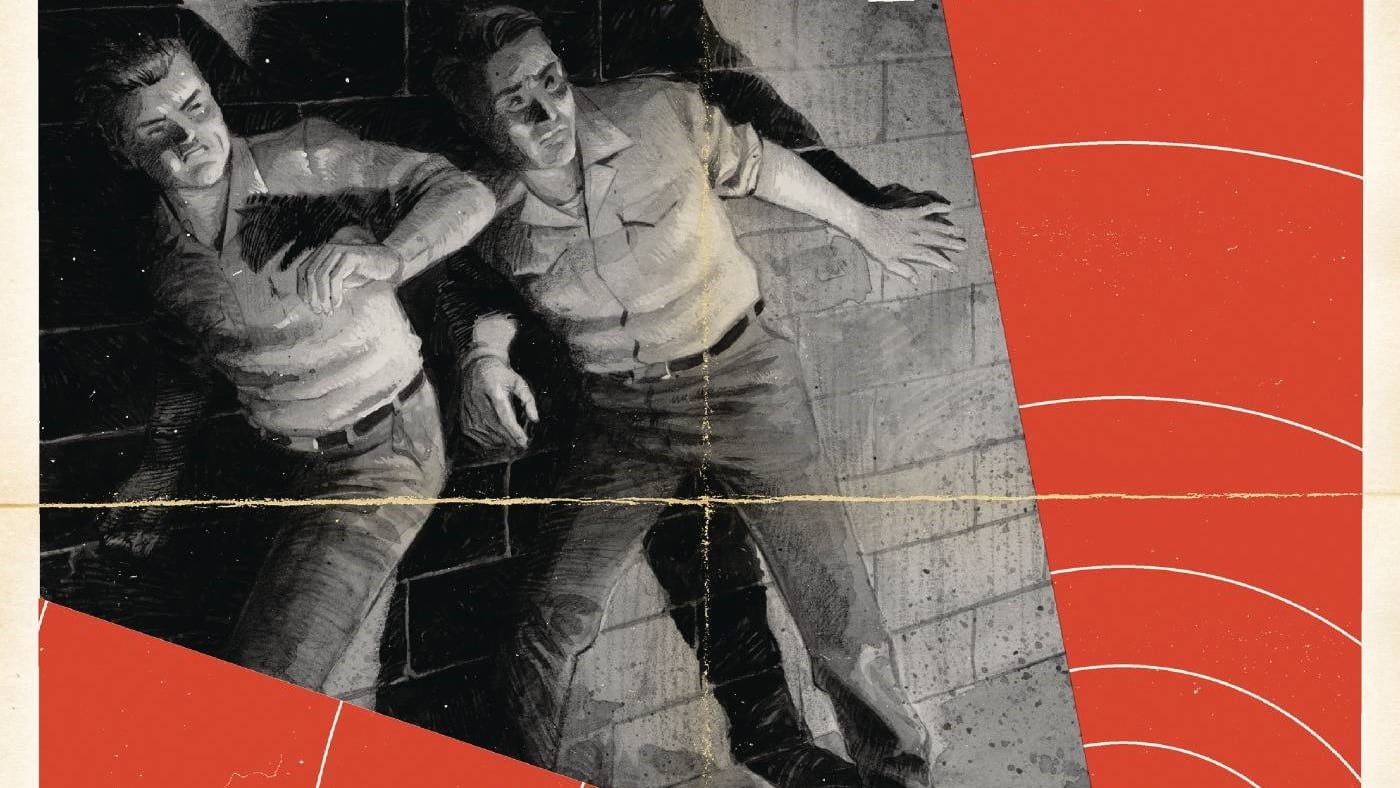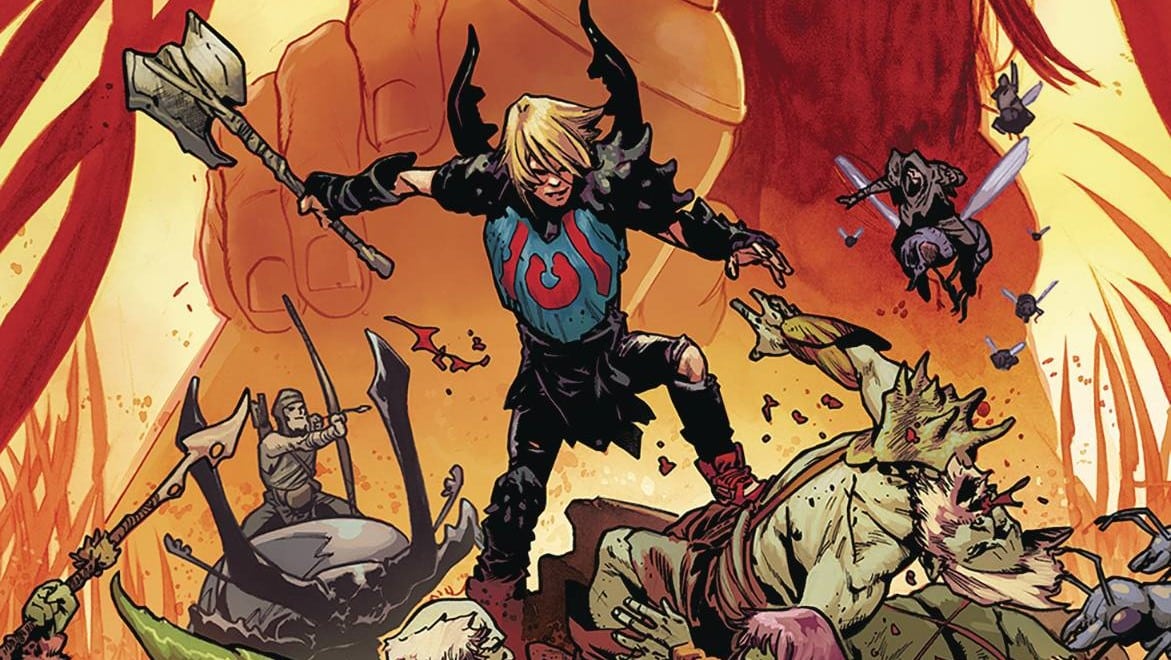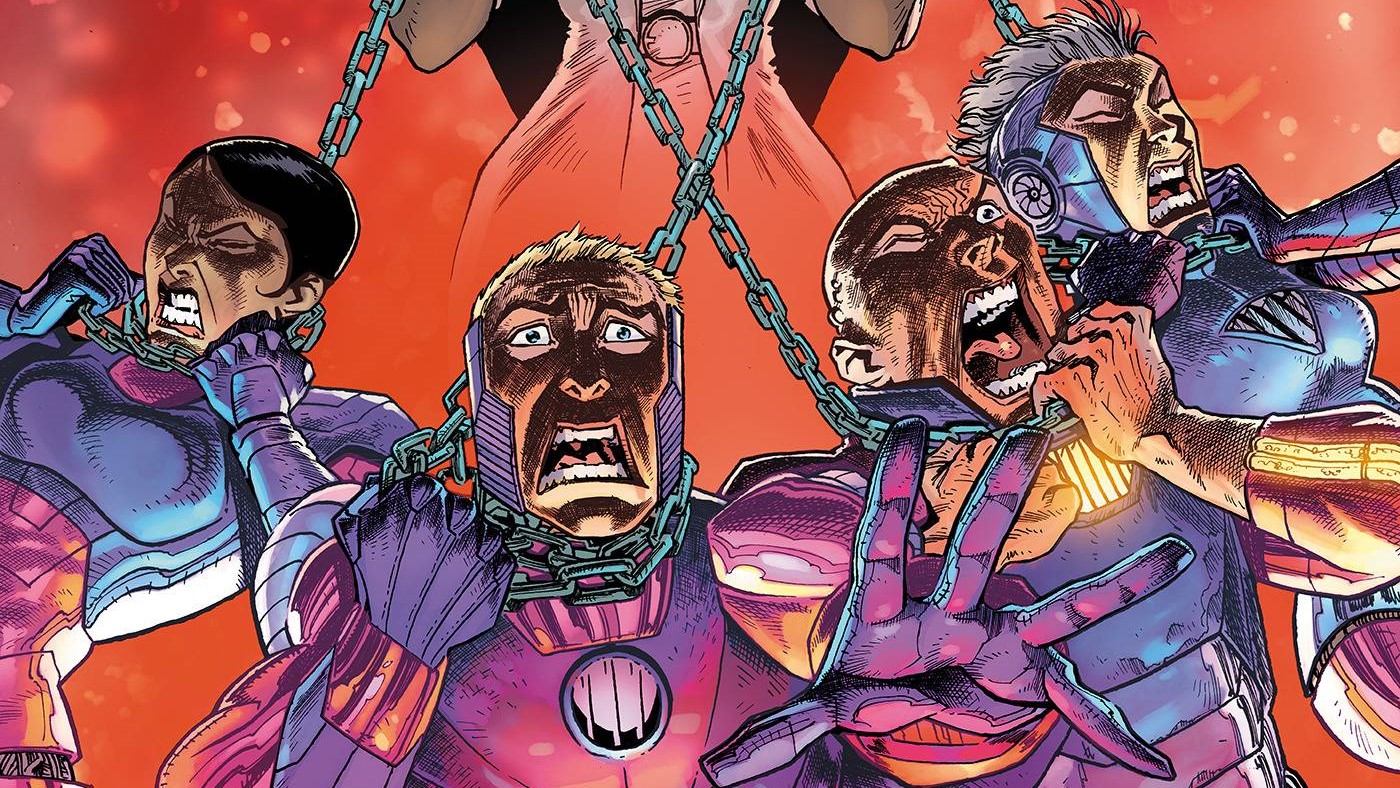Space. The final frontier. These are the comics of the Federation from IDW Publishing. We’re looking at the complete miniseries Star Trek: Deep Space Nine: Too Long a Sacrifice, where a series of murders on Deep Space Nine at the height of the Federation and its allies’ war with the Dominion sets Constable Odo on a noir-tinged investigation. There are secrets not long buried and scars that will never heal. Star Trek: Deep Space Nine: Too Long a Sacrifice is from writers Scott & David Tipton, artist Greg Scott, colorist Felipe Sobreiro and letterer Neil Uyetake.
Matt Lazorwitz: So, Rob, before we dig in, I’d like to ask you: What is your relationship with Star Trek comics? I love Star Trek, and some of the tie-ins are phenomenal, but have found a lot of it to be a little too precious, either trying to be too clever (I’m looking at you, PAD) or, since it is tied in to a continuing concern and taking place in between stories, always stiffly trapped by continuity, which is often the problem with tie-ins to ongoing media.
Rob Lynch: My history with the comics goes back about as far as my first serious taste of Trek, roughly around the home video release of The Voyage Home and well into the initial DC run. I credit Who’s Who in Star Trek as an early primer to the universe (as well as comics themselves … Walt Simonson’s Romulans! Denys Cowan’s Gorn! Todd McFarlane’s Orions!). I was also especially fond of the pacifist Klingon defector Konom, a wonderful character who would defy established norms and serve under Kirk (and sadly become a beta canon artifact after the creation of Worf shortly after).
I dabbled at the very least throughout the latter part of that era, Malibu/Marvel’s mid ’90s venture (that first X-Men crossover where Dr. McCoy met Dr. McCoy was infinitely more fun than it had a right to be!), and the post-millennial return to DC via Wildstorm. I feel Trek comics found their best home more recently at IDW. While still occasionally guilty of being “precious and clever,” there’s been some wonderful out-of-the-box world building and storytelling through series such as Alien Spotlight, the re-adapted City on the Edge of Forever and the brilliant anthology Waypoint.
A Tribute to Odo

ML: More than any of the other Star Trek series, I always felt DS9 straddled genre best. There are so many war stories in it, of course, and spy stories, but it has some of the most human moments in any Star Trek, some of the best social commentary without getting lost in THE MESSAGE. Some genuinely funny stories. And while there are some mysteries, I can’t think of another that has more of a wartime noir feeling than Too Long a Sacrifice.
RL: Absolutely. DS9 at its very best was a series of morality plays punctuated by character studies and painted in shades of gray. TLaS masterfully blends the wartime drama of the later seasons with the lasting legacy and trauma of the Bajoran Occupation. By focusing on the fall of Betazed, a plot point only mentioned in passing in broadcast, the horrors of the Cardassian war machine are renewed and the deep scars of the Occupation are reopened. The murder mystery element is merely a plot point; the allegory is the real heart. There’s a wonderfully ominous moment early on where Garak reminds Odo, “This station has more tales to tell than even you know … and an even longer memory.”
ML: You can absolutely hear Andrew Robinson’s voice delivering that line. I love how this story places Odo back in the spotlight, and by teaming him for most of the series with a new character, the Betazoid investigator Retlaw, it not only draws parallels between the two, but reawakens the level of distrust characters had for Odo earlier in the series. Even though he’s a Changeling, the race who lead the Dominion, Odo was usually treated as a trusted ally of the Federation and Bajor. Here, it’s not just that he’s teamed with someone whose planet has fallen, but someone who can’t sense Odo with their native telepathic abilities, making him more of a mystery to Retlaw and someone more untrustworthy. It evokes the fact that, early in the series, some people associated with the station and the Bajoran Resistance remember Odo as a collaborator, even though Major Kira’s trust earned him some credit with Bajorans.
RL: Odo’s trustworthiness can be attributed to the fact that his only true loyalty is to absolute justice. René Auberjonois was so terrific during those moments where Odo was torn between his incorruptible dedication to order and desire for home. But, whether it’s the familial call of the Founders or a decisive ballgame play, he is ultimately unwavering and there is such a singular, lonesome nobility to it. A Man Alone, indeed.
Investigator Retlaw (the Betazoid Brian Cox) is such an unusually well developed new character for a licensed comic. He’s a perfect counterpart to Odo, a true kindred spirit of sorts despite their wildly differing methodologies of intuition versus empathy. Retlaw’s inability to read Odo is also accompanied by his admitted difficulty of parsing guilt from those who believe they are innocent … an important revelation that foreshadows the conclusion. A great character with tremendous dynamic potential throughout the Trek sandbox. I’d love to see IDW use him again.
ML: Brian Cox! Perfect casting!
And I feel this was a great time to do this series as a tribute of sorts to Auberjonois, the actor who played Odo, who passed only a few months before the series started. He is one of my favorite actors from a Star Trek series, and from his other work: I remember watching Benson with my dad when I was very young, and I saw him on Broadway in the absolutely terrible musical adaptation of Roman Polanski’s The Fearless Vampire Killers, Dance of the Vampires. The show was not good, but he was charming as all get out.
RL: His passing, along with Aron Eisenberg, was a heartbreaking loss to the Trek family.
A New Occupation

RL: As Retlaw tours the station with Odo, he remarks at how the Cardassians are currently building one just like it in orbit of the newly occupied Betazed, using his people as slave labor. This casual exchange hammers home the brutal reality of the Bajoran Occupation just as strongly as explicitly showing it, perhaps even more disturbingly as a moment of “this can happen here.” Despite its new Starfleet designation as a place of diplomacy and trade, the horrific history of Terok Nor still lingers in every corner. This generically renamed place was, for both Bajorans who suffered and Cardassians who yearned for the “old days,” a monument of imperialistic brutality. A deep scar that could never fully heal, and now a fresh new wound opens elsewhere on a prosperous Federation world. Blood. Steel. Again.
ML: That is an amazingly timely observation. It reminds me of the episode “The Wire,” where Garak is revealed to be using a device to basically keep himself happy all the time because he is miserable in his exile, and the station is a reminder to him of everything he has lost. The killer in this story, Lavin Meryn, must have a similar feeling, living in the station where she and her people suffered for so long.
RL: Even more timely was a very particular connection that I made to current social and political conflict over the presence of monuments and flags that stand in contrast to modern American ideals. The Confederate flag, for one, is a symbol that conjures unease, hatred, division and pain far more than “heritage,” “history” or “pride.” It is representative of a failed insurrectionist movement (twice now!) and belongs solely in a museum where it can rightfully stand as a cursed artifact, studied and condemned by all Americans. Back in the 24th century, I began to feel that a parallel existed with the continued presence of Deep Space Nine. Current events and a comic book series made me feel a beloved fictional place nearly three decades old is now … dirty. While its new purpose did contribute to the reconstruction of Bajor (“put [them] on the map,” Jean-Luc Picard once claimed), it also served as a symbolic reminder of the Occupation and a source of unresolved hostility, as well as a target of Cardassian reclamation. Should the station have been scrapped, “good riddance,” as soon as the Cardassians bailed? Was the Federation negligent in weighing the emotional and political fragility of the Bajoran people? Surely such an idealistic and forward-thinking organization as Starfleet would prefer to build a brighter future rather than toil in a place founded on the blood and rape of an oppressed race? Should Terok Nor have been relegated to Memory Alpha for all Federation citizens to be studied and condemned? It’s very chewy food for thought, and I’m not entirely sure this was an intentional analogue, but great Trek fuels dissection and discussion.
ML: Star Trek works at its best when it makes you think, something we both agree on, yes? So this series, which was always about someone who couldn’t move beyond the truly horrific events of their past (something that resonates with me as we write this on International Holocaust Remembernce Day), now has a whole new set of wrinkles.
Lavin’s inability to lose her rage is one of those points that is haunting. She is killing collaborators, and those who profited from the Occupation. It’s easy to want to punch Nazis; but this brings up the question of, is it just as satisfying punching the people who banked Nazi gold or kept their heads down and just quietly took what they could? There’s an easy answer, which is yes, and on many days I’m all for it. But easy answers aren’t always right, and more than that, the questions of when it stops, when someone finally is at peace and if revenge ever really is a balm for a tortured soul ring throughout the series.
RL: I’m reminded of the assassination of Cardassian file clerk Aamin Marritza in the haunting classic “Duet.” The murder of this innocent man by a regular Bajoran citizen is tragic, but there is a troubling feeling that the pain that precipitated it somehow washes it of being criminal, and Kira’s tearful protest over his body goes unheeded. Again, those shades of gray that DS9 excelled in force you to re-evaluate your own feelings and sensibilities. In the end, Lavin is not simply a murderer, but yet another victim who deserves peace and closure along with due justice.
The Holosuite
- The subtitle, Too Long a Sacrifice, comes from the poem “Easter, 1916” by William Butler Yeats: “Too long a sacrifice / Can make a stone of the heart.”
- Greg Scott’s art is moody and close to photorealistic without getting into that stiff, too-close-to-production-stills look. Felipe Sobreiro’s dark and moody colors work brilliantly for the usually dark corridors of DS9 and for the twisting themes of the story.
- Telling a more intimate, character-based story works in the best tradition of the series. The kitchen sink approach in other books *coughcoughPADcough* is novel, occasionally fun, but not always the most respectful to the source. This is an excellent example of thoughtful storytelling and a superb modern representation of DS9 during this new Trek renaissance.






